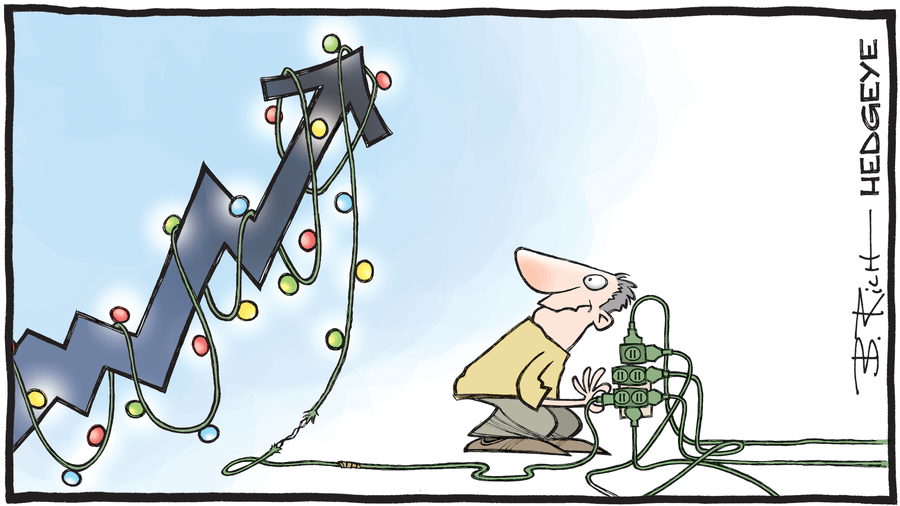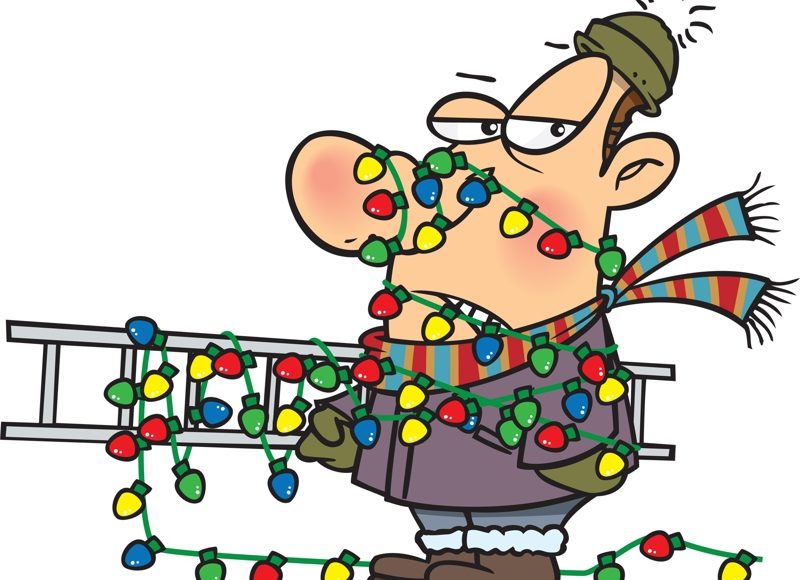Top 13 Christmas Lights Safety Tips
For some, the holiday season starts the day after Halloween while others prefer to wait until they’ve carved into the Thanksgiving bird to decorate their home in red and green. Whether you’re an early bird or a week-of decorator, most homeowners can agree that hanging Christmas lights will be the most time-consuming task for the holidays and one of the most dangerous.
According to the National Fire Protection Association (NFPA), Christmas lights cause 40% of Christmas tree fires, and overall decorations caused more than 15,000 injuries resulting in an emergency room visit with falls being the highest at 34%, according to the Consumer Product Safety Commission (CPSC).
Knowing how to properly install and maintain your Christmas lights could be the difference between happy holidays or more than just chestnuts roasting over an open fire. Here are 13 safety tips to follow when decking the house with Christmas lights.
Tip 1: Replace Old Or Damaged Christmas Lights
Before plugging in last year’s Christmas lights, inspect their condition to make sure they’re up to par. Check for cracked or frayed cords, wires poking through the insulation and sockets without bulbs.
It might seem tedious, but damage to the cord or light bulb could cause an electric shock when plugged in, or worse, an electric fire.
Tip 2: Switch To LED Lights
If you’re in the market to purchase new Christmas lights, consider LED lights with epoxy lenses. LED lights are cool to the touch, compared to traditional Christmas lights, and use less electricity –  a nice break for your electric bill.
a nice break for your electric bill.
Since most holiday fires are caused by overheated lights on a Christmas tree, switching to LED lights could prevent your tree from catching fire.
Tip 3: Follow The Rule Of Three
Most manufacturers agree that plugging in more than three sets of Christmas lights into a single extension cord may cause problems with overheating. However, it depends on both the strand’s wattage and the maximum watt capacity of the plug.
If you’re unsure of how to check the wattage of your home, you can use a power strip with a built-in circuit breaker instead of your wall outlet. Make sure you cross-reference the wattage of your Christmas lights to the amount of your power strip before you plug it in.
Tip 4: Look For Christmas Lights With A UL Safety Certification
Some Christmas lights will include a UL Safety Certification, meaning that the lights have been designed and manufactured to meet industry specifications for safety from Underwriters Laboratories (UL), an independent product safety certification origination.
Lights that have these certifications will be safer to use in your home, compared to lights that don’t have this certification. سلوتس اون لاين If your current lights don’t have the UL Safety Certification, you might want to invest in ones that do, especially if your lights are older than a few years.
Tip: 5 Keep Your Christmas Tree Hydrated
Other than overheated Christmas lights, fires are also caused by dry Christmas trees. A dry tree will be more flammable compared to one that’s been properly watered. If you prefer a real Christmas tree, make sure you check the water every day to prevent the tree from drying out.
However, if you’re not too attached to a real Christmas tree, it’s actually safer to purchase an artificial Christmas tree made from fire-resistant materials.
Tip 6: Use Outdoor And Indoor Lights, Respectively
Christmas lights are labeled by their use, so you’ll notice a disclaimer that reads “for indoor use only” or “for indoor and outdoor use.” Make sure you read this carefully as indoor-only Christmas lights cannot be used for the outdoors.
Indoor-only lights aren’t insulated like outdoor lights and won’t work with moisture from the outdoors. In fact, if indoor lights are exposed to water, snow or any other outdoor element, they could possibly become hazardous.
Tip 7: Use Ladders Appropriately
Since falls are the highest emergency room-related injury during the holidays, it’s important to know how to safely use a ladder when hanging Christmas lights off the roof of your home or in any other space that would require a ladder.
Have a spotter with you at all times to hold the ladder for stability. When hanging Christmas lights, never extend your body further than parallel with the ladder to prevent tipping. Consider a wooden or fiberglass ladder when you’re working with Christmas lights to prevent an electric shock.
Tip 8: Use Christmas Light Clips Instead Of Nails Or Screws
When hanging outdoor Christmas lights on your roof, don’t use nails or screws to secure the lights as they can puncture the wires, causing the lights to malfunction, or worse, shock the person installing them.
Instead, opt for light clips found at any hardware store to secure the lights onto the house. The light clips are safer for the Christmas lights and will cause less damage to your roof, compared to nails or screws.
Tip 9: Secure All Loose Light Strands
If you need to use an extension cord or have a long strand of lights between your Christmas tree and outlet, make sure you secure all loose light strands with electrical tape to avoid tripping and falling.
If you have loose light strands outdoors, secure them with ground staples found at any hardware store. Simply place the staple around the light and push as far as you can into the grass or other soft surfaces to secure the cord.
Tip 10: Don’t Run Christmas Lights Through Windows Or Doors
If you don’t have access to an outdoor outlet, you may find it challenging to light up your home this holiday season. Remember that you can’t run Christmas lights or extension cords through windows or doors.
When closed on the light strand, windows and doors can cause wires to break or become frayed from constant pressure, making them a safety hazard for shocks or electric fires.
Tip 11: Use A GFCI Outlet For Outdoor Lights
There’s a specific outlet used for outdoor Christmas lights called a ground-fault circuit interrupter (GFCI) outlet. It prevents electric shock from electrical systems that could be exposed to wet conditions, like rain or snow, acting as a circuit breaker.
This is especially helpful if your outlet is outdoors. Make sure you protect yourself and your home from electric shorts by purchasing a GFCI outlet. You might need to hire a licensed electrician to install this outlet or you can install it yourself. لعب القمار على الانترنت
Tip 12: Don’t Forget To Turn Off The Lights
Christmas tree lights should not be left on for prolonged periods of time or overnight. Even LED lights can overheat, and with a combination of a dry Christmas tree, could cause a fire. Make it a habit to turn off your Christmas lights every time you leave the house or go to bed at night.
To make it easier, purchase a light timer for your Christmas tree lights and set it to a time to turn off every night and back on the next day. You can also buy a wireless control to shut off your lights through an app on your phone. Not only could this save your home from a fire, but it could also save you money in electricity bills. شرح موقع bet365
Tip 13: Be Sure To Store Lights Properly Until Next Season
When the holiday season is over, make sure you don’t slack on putting away your decorations. Check the local laws of your city for how long you can keep up your holiday decorations. Some cities will ticket homes who have their holiday decorations up past a certain date.
Store all outdoor and indoor Christmas lights in a well-sealed container to prevent water damage and rodent access.

